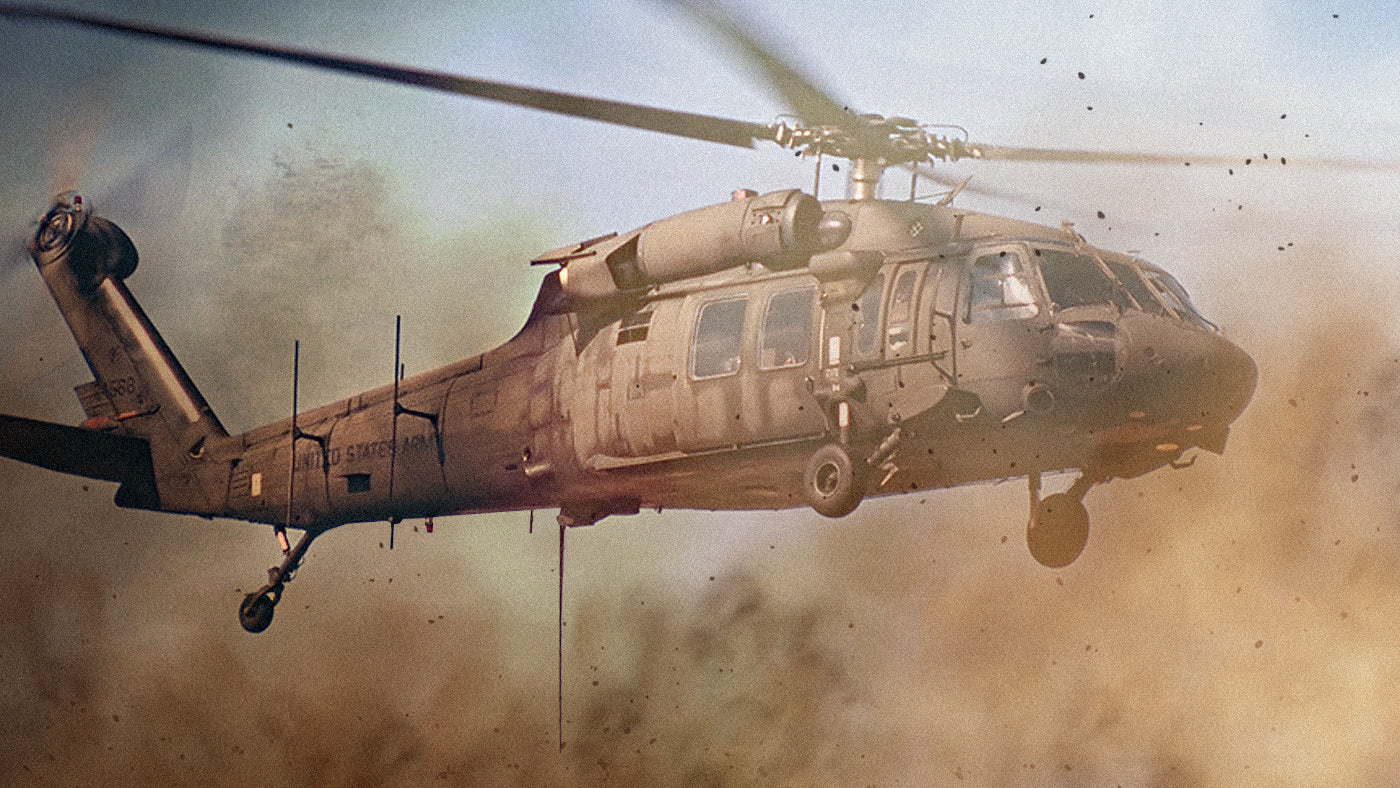The Advancement of the UH 60 Black Hawk: From Principle to Fight
The Advancement of the UH 60 Black Hawk: From Principle to Fight
Blog Article
Comprehending the Duty and Significance of Different UH60 Parts in Aviation Operations
In the complex world of aeronautics procedures, every component of a UH60 helicopter plays a critical function in making certain risk-free and effective trips. As we explore the relevance of the rotor system, engines, avionics, transmission system, and landing gear in UH60 procedures, a deeper recognition for the harmony of these aspects arises, losing light on the intricacies that underpin the aviation sector's dedication to accuracy and reliability.
Rotor System
The blades system, a vital element in helicopter style, plays an essential duty in providing lift and directional control during trip. Including the primary rotor and tail blades, this system is in charge of generating the essential wind resistant forces to keep the helicopter air-borne and maneuverable. The major blades, typically located over the helicopter, is the key source of lift. As the rotor blades revolve, they create a pressure difference between the lower and leading surface areas, allowing the helicopter to conquer gravity and ascend right into the air.
Moreover, the major blades also permits the helicopter to relocate different instructions by tilting the rotor disc. By altering the angle of the rotor blades collectively, pilots can regulate the helicopter's ahead, in reverse, and laterally motions. On the other hand, the tail blades, placed at the tail end of the helicopter, counteracts the torque produced by the primary blades's rotation, making certain the helicopter remains well balanced and can make controlled turns. With each other, these blades elements form an advanced system that enables helicopters to do a variety of trip maneuvers successfully and securely.

Engines
In air travel procedures, the appropriate performance of engines is paramount to matching the blades system's wind resistant capabilities in helicopters. The UH60 helicopter is geared up with 2 General Electric T700-GE-701D engines, each providing 1,890 shaft horsepower. These turboshaft engines are critical components that power the major rotor transmission, tail blades system, and other necessary helicopter systems. The engines play an important duty in producing the needed power to lift the airplane, regulate its trip, and guarantee a secure procedure.
The dependability and performance of these engines are critical consider the UH60's general functional effectiveness and safety and security. Normal maintenance, inspections, and adherence to producer standards are crucial to keep the engines in optimum condition. Keeping track of various criteria such as engine temperature, oil stress, and gas intake is important to identify any type of potential concerns early. In situation of engine breakdowns or emergencies, pilots rely upon their training and the helicopter's layout features to execute essential treatments swiftly and securely. On the whole, the engines in UH60 helicopters are essential elements that contribute considerably to the aircraft's functional success and objective performance.
Avionics
In the UH60 helicopter, avionics include a wide array of systems that make sure safe and reliable trip. Navigation systems, like GPS and inertial navigating systems, offer accurate placing information to the staff, More Bonuses helping in route preparation and making certain exact navigation throughout flights.
Additionally, avionics play a vital role in enhancing situational understanding for pilots, Continue allowing them to keep track of essential flight specifications, climate condition, and possible dangers in real-time. By offering essential data and automation capabilities, avionics add considerably to the security, efficiency, and total performance of UH60 helicopters in diverse aeronautics operations.
Transmission System
An essential component of the UH60 helicopter's capability and performance is its transmission system. The transmission system in a UH60 helicopter is accountable for transferring power from the engines to the primary rotor and tail blades systems. This crucial element guarantees that the helicopter can navigate effectively and maintain stability during flight procedures.
The transmission system in the UH60 helicopter includes various parts, including the main transmission, intermediate transmission, tail transmission, and drive shafts. Each of these elements plays a crucial duty in guaranteeing that power is distributed efficiently throughout the aircraft.
The main gearbox is especially vital as it transfers power from the engines to the major blades system, enabling the helicopter to take off the ground and attain ahead, backwards, and lateral motion. The tail gearbox, on the various other hand, transfers power to the tail rotor, which assists combat the main rotor's torque and supplies directional control.
Touchdown Equipment


The touchdown equipment of the UH60 helicopter serves as a crucial component for ensuring stable and secure ground operations, matching the functionality of its transmission system. Consisting of wheels, shock absorbers, and assistance structures, the landing equipment supports the helicopter's weight throughout takeoff, landing, and while on the ground. Regular assessments, lubrication, and substitute of worn-out elements are necessary to support the dependability and efficiency of the landing gear system.
Final Thought
To conclude, the different components of the UH60 you could try here helicopter play important duties in making sure the smooth operation of aviation tasks. uh 60. The blades system, engines, avionics, transmission system, and landing equipment all collaborate to guarantee the security and performance of the aircraft. Recognizing the value of each element is necessary for pilots, engineers, and maintenance team to guarantee the total functionality of the UH60 helicopter during trip procedures

Report this page